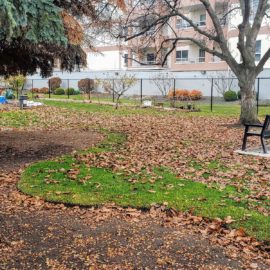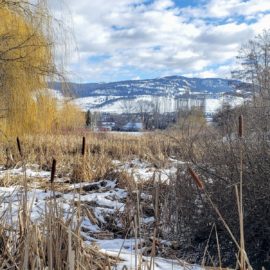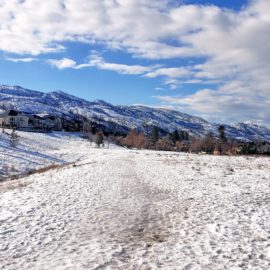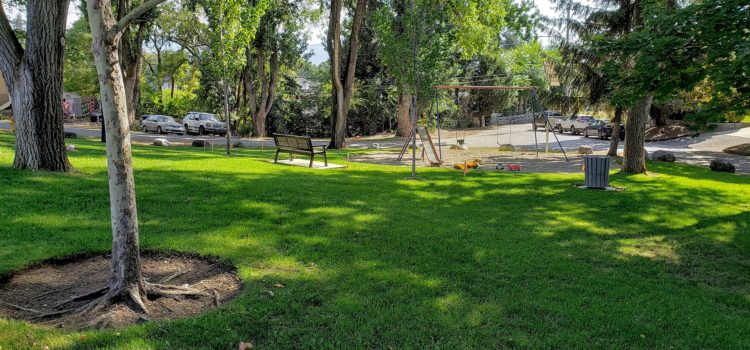
Kelowna Parks Challenge – Trip #7
I have gone on another adventure as part of the Kelowna Parks Challenge! As part of my continuing efforts to visit all of Kelowna’s parks by the middle of next summer I explored four parks in the Bankhead neighbourhood. They were Lombardy Park, Bankhead Park, Duggan Park, and Richmond Park.
Read on for my impressions and reflections!
Bankhead
Situated on low hills that lie between the Brandt’s Creek valley to the north and the Mill Creek valley to the south, Bankhead was a well-known orchard for much of the twentieth century. Famous for its pears, it was started by men who were instrumental in the establishment and growth of fruit orcharding in the Okanagan.
For all of that time, Gordon Road was the eastern limit of the city of Kelowna, so the orchard was on the edge of town. In the 1960s it was subdivided for suburban development and streets were laid with names like Orchard Drive and Bing Avenue.
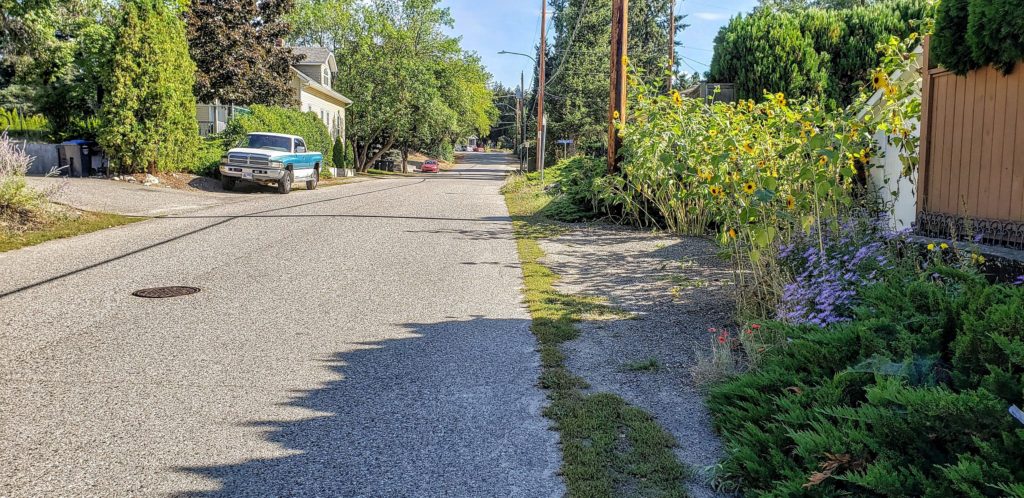
Today, this neighbourhood retains its late twentieth-century suburban feel. None of the streets I travelled there had sidewalks, and many of them curved to respect the contours of the pre-existing hills. The residential lots vary in size and shape, and were often adorned with beautiful, well-established gardens. There are several cul-de-sacs in the neighbourhood and most of them feature walkways for pedestrians to cut through to an adjacent street.
This would be a great place to go for a walk even if it had no parks.
Lombardy Park
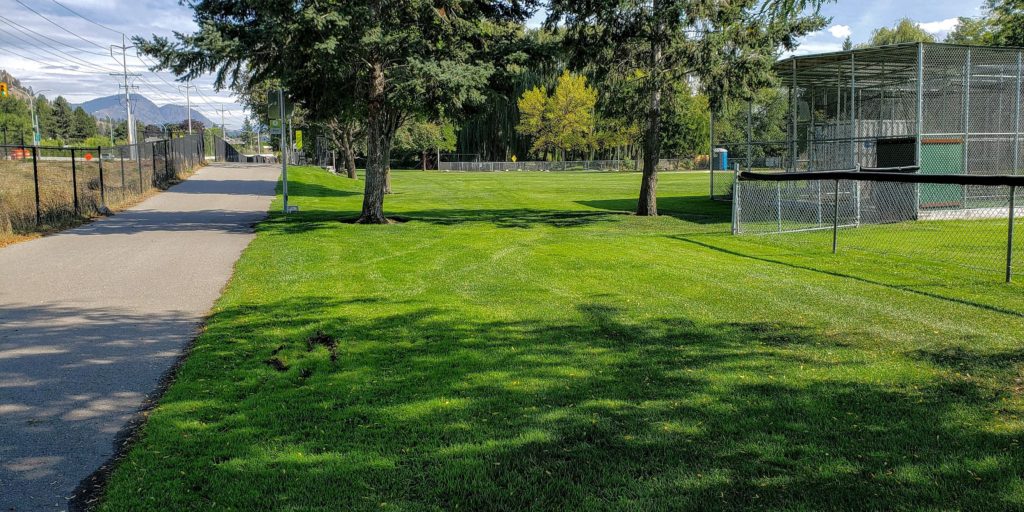
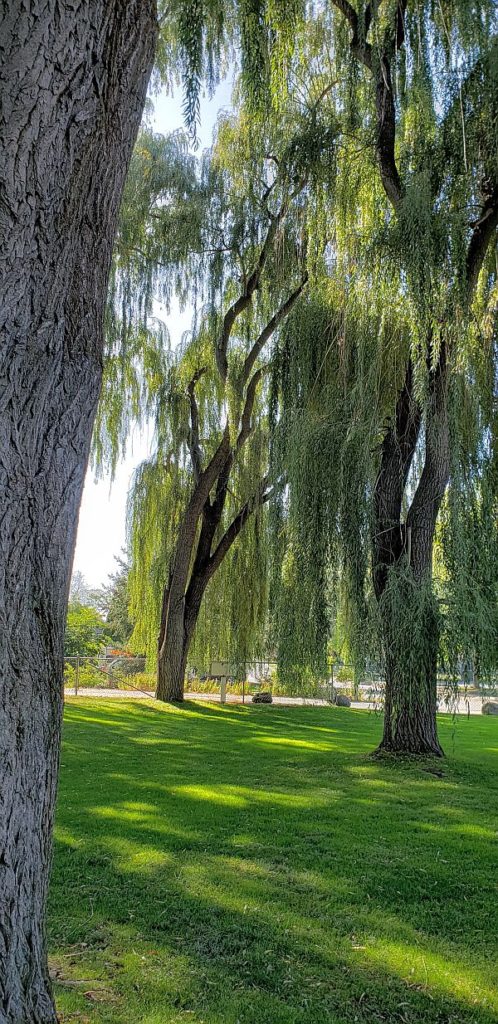
Lombardy Park is an athletic park on the north side of Bankhead. It is located directly east of Bankhead Elementary School, and occupies two irregularly-shaped lots that lie between the bottom of the hills and Clement Avenue. The recently completed Okanagan Rail Trail runs along the north side of the park.
Most of this park is taken up by three baseball fields and two t-ball fields. In addition, I spotted practice pitching mounds and a batting cage, so this park is well-equipped for its focus sport.
At the far eastern end of the park, I found a beautiful glade of tall weeping willow trees, along with a children’s playground and a picnic table. Local topography suggests the glade might once have been the site of a seasonal creek that descended from the hills to join Brandt’s Creek. That would explain the willows.
Washrooms and Drinking Fountains: There are no drinking fountains in this park. There is a concrete washroom with plumbing in the middle of the park. Monday to Friday, it is only open after 3PM. There is also a portable washroom beside the parking lot at the east end of the park.
Dog Rules: Because it is ninety percent sports fields, dogs are not allowed in this park.
Bankhead Park
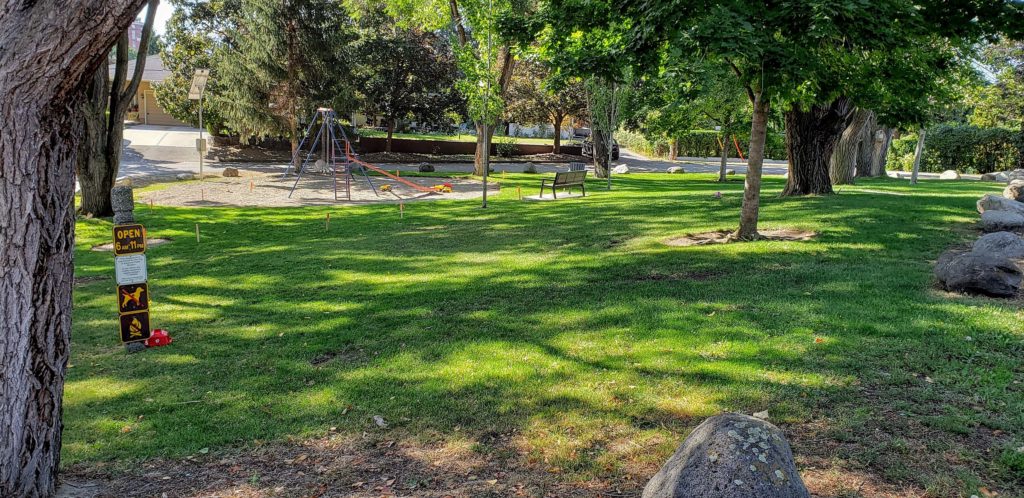
Bankhead Park is a neighbourhood park of the most delightful variety. It is neither flat nor square, which are both points in its favour as far as I’m concerned, and it is entirely shaded by surrounding trees, which makes it a lovely rest-stop on a hot day. Adding to its ambience, the park can only be reached by a specific set of suburban streets. This gives it the feel of a hidden enclave.
The only major feature in this relatively small park is a children’s playground. Judging from the flagged stakes I saw in the ground, this feature is set to be expanded slightly and moved a metre to the east. To be fair, it almost touches the western edge of the park currently. Considering that the park is edged on all sides by road, moving the playground towards the middle of the park is probably a good idea vis-a-vis children’s safety.
Washrooms and Drinking Fountains: There are no drinking fountains in this park. There are no washrooms in this park.
Dog Rules: Dogs are not allowed in this park, because it is small and mostly taken up by a playground for small children.
Duggan Park
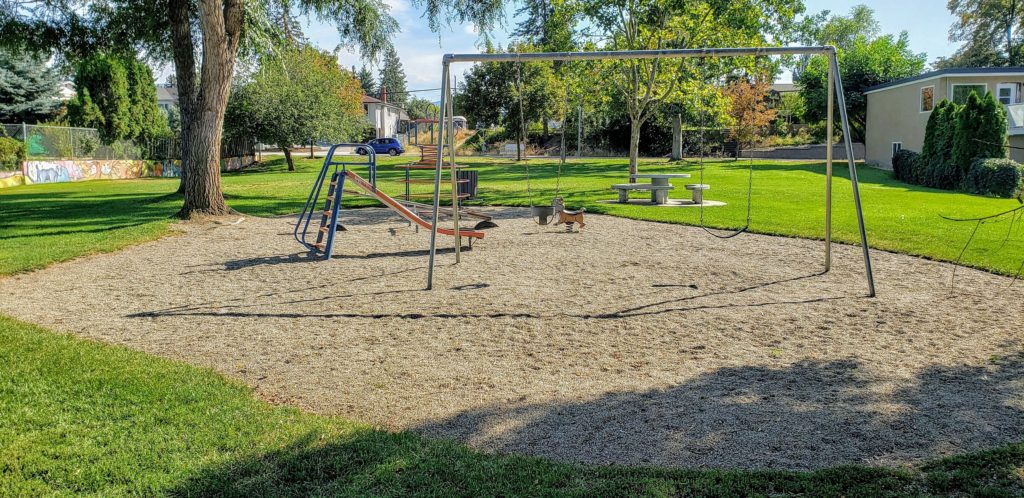
Duggan Park is a rectangular plot in almost the geographic centre of Bankhead. With a lawn and a playground and a few trees, it seems almost the epitome of a generic neighbourhood park, except for an interesting recent addition.
In 2008, in an effort to improve park facilities for dog owners, the back end of Duggan Park was fenced off to provide an off-leash area for “small dogs”. When I visited I saw no signage to indicate that large dogs are not welcome, however. Considering how few dog off-leash facilities there are in the city, this must have been a very welcome addition. That said, there was no one using it on the afternoon that I was there.
Washrooms and Drinking Fountains: There are no drinking fountains in this park. There are no washrooms in this park.
Dog Rules: Dogs are allowed on-leash in most of this park. At the back end of the park, there is an off-leash area.
Richmond Park
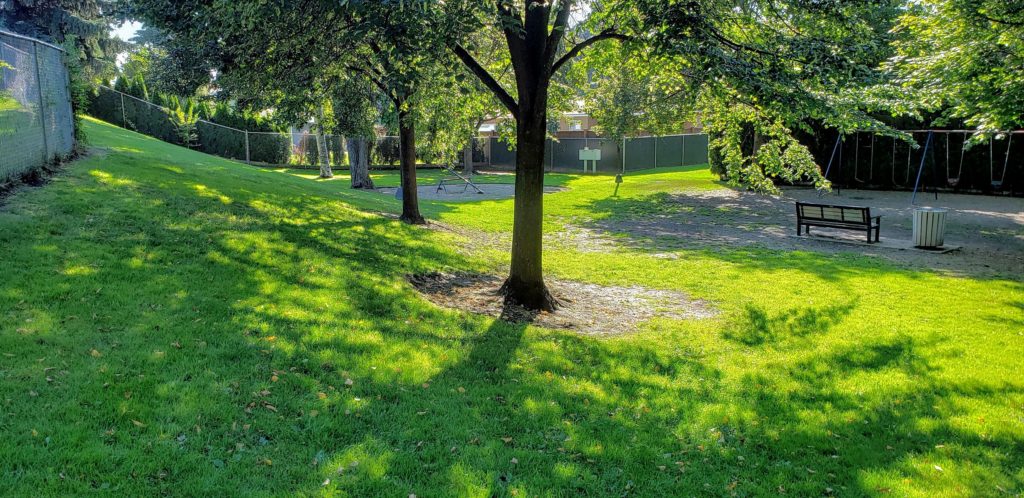
Richmond Park was perhaps my favourite discovery from this adventure. Tucked into what looks on the map like leftover space, this park is completely surrounded by backyards. On the west side, a wide grass-carpeted walkway connects the park to Richmond Street, while a narrower path connects the northeast corner of the park to Alta Vista Place.
As hidden as Bankhead Park felt, this park felt even more like a secret. In addition to providing a wonderful off-street walking connection through the neighbourhood, this park contains a children’s playground and a significant slope. It is also the location of two good old-fashioned lampstands. I will definitely be coming back here on a snowy winter’s night to see how much it looks like Narnia.
Washrooms and Drinking Fountains: There are no drinking fountains in this park. There are no washrooms in this park.
Dog Rules: Because it is small and mostly taken up by a children’s playground, dogs are not allowed in this park.
Reflections
Seasonal Transition
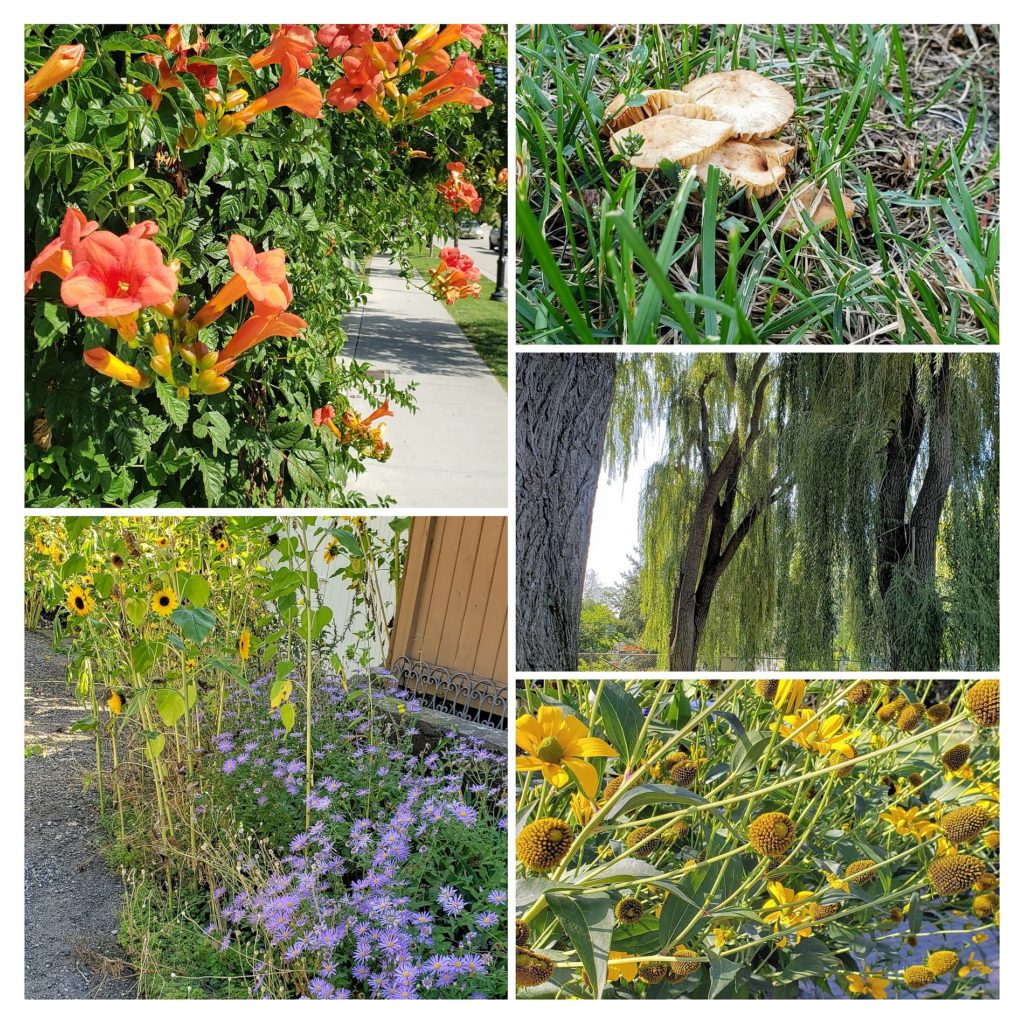
Since this is my first year in Kelowna, I am looking forward to watching the changing of the seasons. In Vancouver, the summers are similarly dry, though not as hot, but the fall and spring are very long while the winter is very short and milder. Now that September is here, I am on the lookout for signs of a sooner or more severe autumn.
On this walk, however, I didn’t find any. Maybe it’s because I picked a sunny day for my adventure, but everywhere I looked it seemed summer was still in swing. Flowers bloomed and bees buzzed. I suppose the main difference was the crowd of children getting out of school as I passed Bankhead Elementary. An early augur of the season, perhaps?
1960s Subdivision Design

I commented on several of its features above, but Bankhead provided a great opportunity to observe how subdividing was done in the 1960s. I’m not enough of a student of city planning to say if it was much different than the ’50s or ’70s but certain elements were clear.
It seemed to me that including sidewalks, or even curbs, was not required in that decade, and that there was less of an appetite or ability to level hills in order to guarantee a flat lot to build on. The inclusion of pedestrian walkways at the end of cul-de sacs was a notable feature.
I am glad the designers were able to find charmingly strange nooks to fit parks in, though it does give them the feel of an afterthought. A quick glance at the map suggests park area per square kilometre had increased since the beginning of the twentieth century when the neighbourhood to the west was designed.
Park Renovation
Duggan Park provided perhaps the best example so far in the challenge of a simple but effective revitalization of an older park through renovation. On my adventures, I have seen parks like Waterfront Park and Rowcliffe Park that were built on the bones of previous city institutions. I have also seen a site like Stuart Park, that was not so much renovated as designed anew where there had previously only been a featureless lawn. With the simple addition of a chainlink fence, however, Duggan Park has been transformed from a mid-twentieth century relic to a modern city-wide destination.
Conclusion
This adventure provided an excellent trip through a historic Kelowna neighbourhood. The weather was great, and I only hope such days will continue to make themselves available to me.
With the addition of these four parks, I have now visited thirty-five out of 203 parks, or seventeen percent, in forty-seven days, or thirteen percent of the year. The gap is narrowing. Perhaps it is time to visit a few more beaches before the summer is completely gone.

